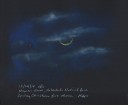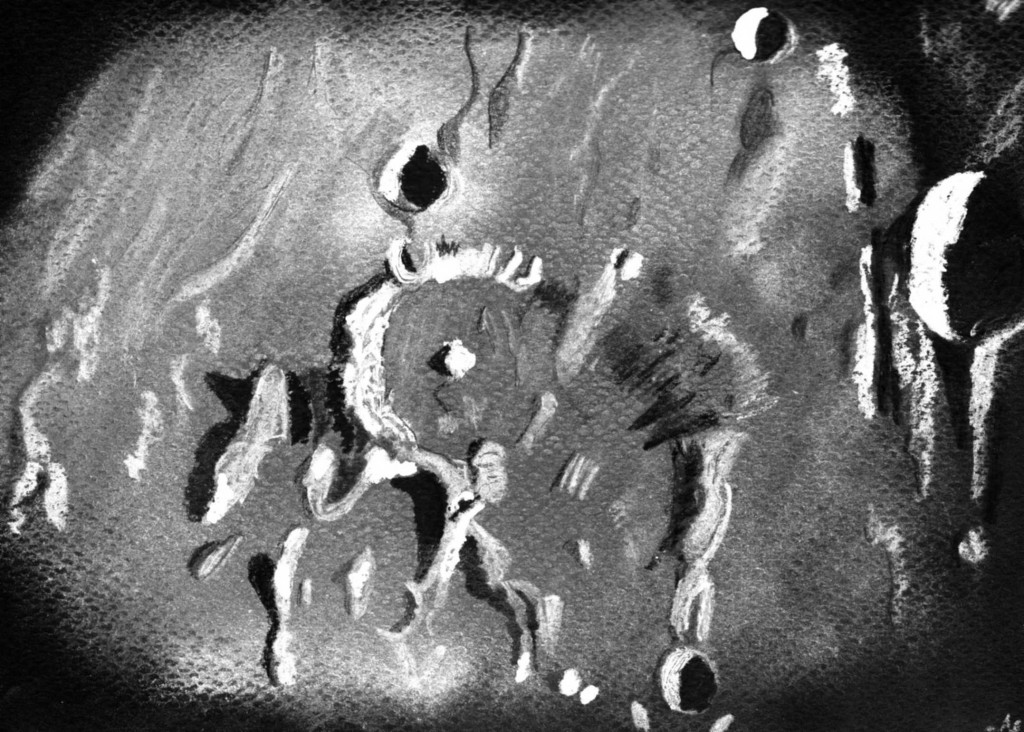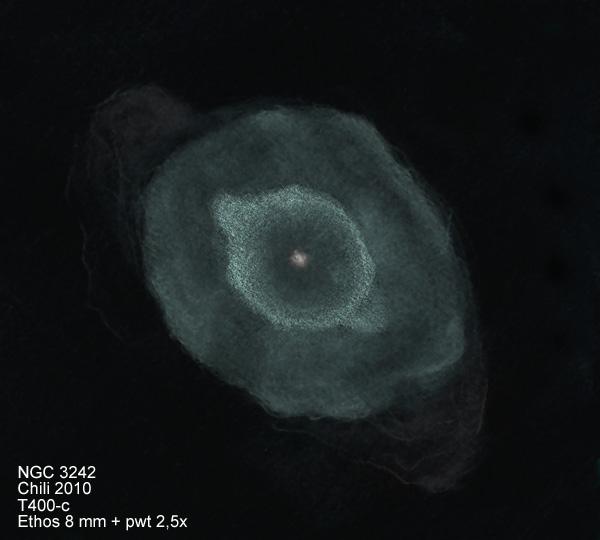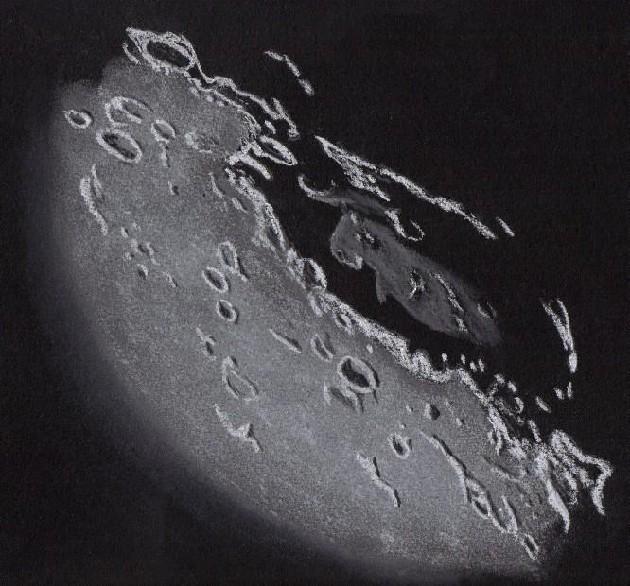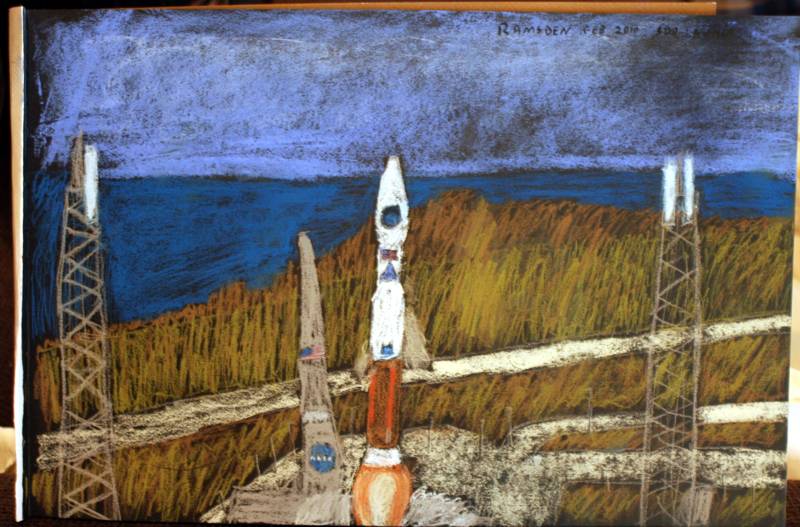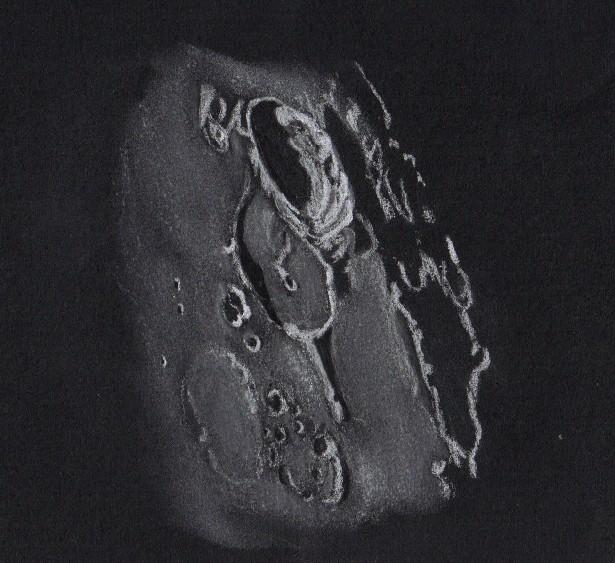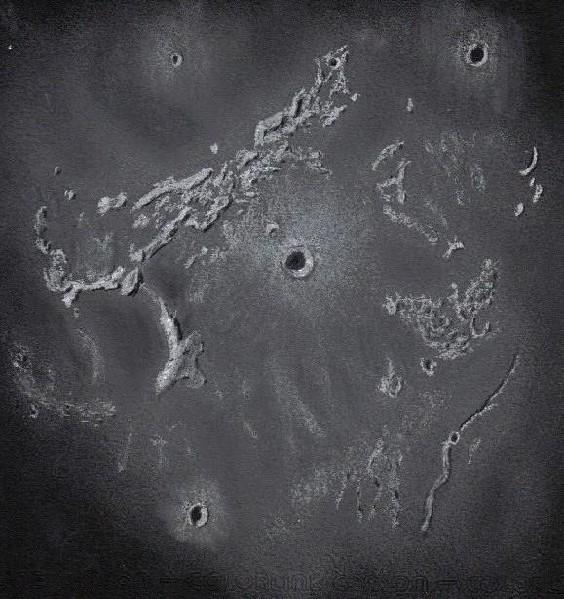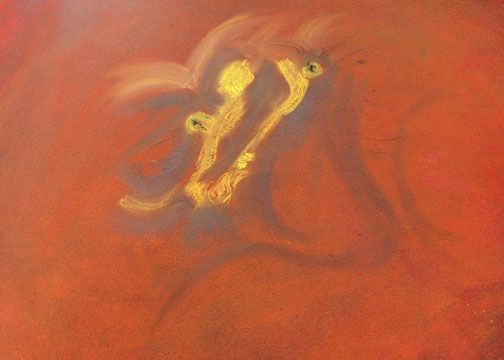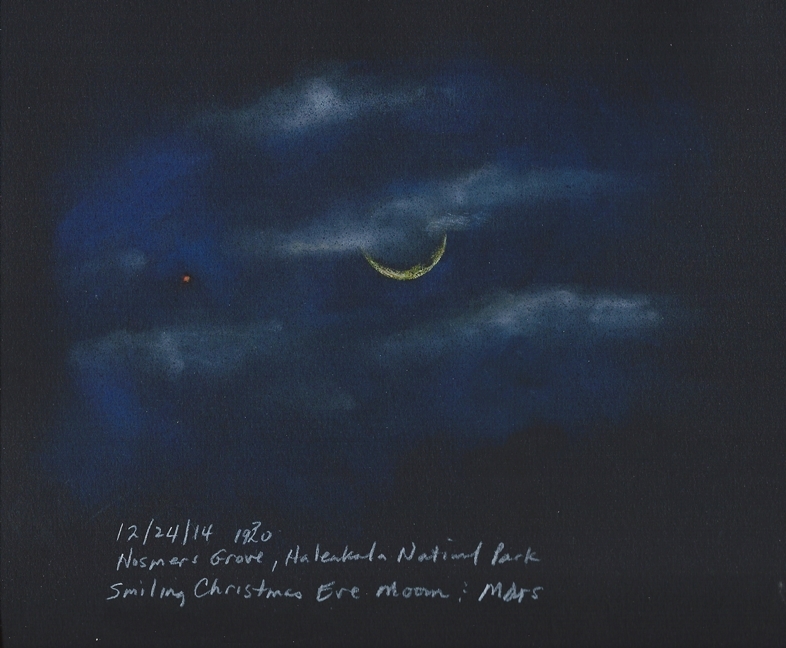
Aloha,
Every Christmas Eve, my family treks to the top of Haleakala to feel the chill and look for Santa’s Sleigh. This year we went to the 10,000 el to find it a cold 36*, wet, and blowing rain. After a few minutes we jumped back into the car a bit disappointed, to descend the mountain. Right before the park exit the sky had mostly cleared and the winds calmed. There we hiked under the “smiling” Hawaiian crescent. Chilled cheeks and fingers, it was perhaps one of the nicest Christmas Eves ever. This sketch was drawn from my memory of the evening.
In the winter months the path of the Moon is more parallel with the horizon giving the lunar crescent in Hawaii a bowl or smile like appearance when lit from the already set sun. Ancient Hawaiian’s called this the “wet moon” because it looks like a bowl that could be filled up with rain. As the winter moves into Spring & Summer the crescent shifts to “pour” water onto the land, empties and becomes a “dry moon” once more. Wet moons occur routinely in the tropics where the sun and moon rise and set nearly vertically.
3.5 day old Crescent Moon & Mars
12/24/14 1930 HST
Haleakala National Park, Hosmers Grove
Black Canson paper with colored Conte’ Crayon and watercolor pencils
Cindy (Thia) Krach
Webmaster’s note: Wishing all astrosketchers a Very Happy New Year and looking forward to another year hosting all your wonderful observational sketches!
Richard Handy
Jeremy Perez
